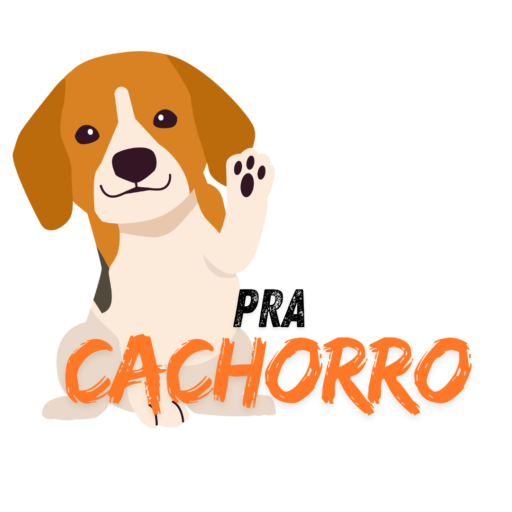If you own a dog, you’ve likely caught them digging up the backyard or hiding toys and bones in strange places. This quirky habit is deeply rooted in their ancestry, a fascinating blend of survival instincts, emotional drives, and environmental influences.
But why do dogs bury things, and how does this behavior connect to their evolution? In this comprehensive guide, we explore the science behind this instinct, its connection to survival, and actionable tips to manage it effectively—while celebrating your dog’s natural quirks.
1. Survival Instinct: A Legacy from Wild Ancestors
The urge to bury objects traces back thousands of years to the wild ancestors of modern dogs, such as wolves and early canids. In harsh, unpredictable environments, food scarcity was a constant threat. To survive, these animals developed strategies to store excess food for lean times.
- Preserving Resources:
Burying food served two critical purposes. First, it protected meals from scavengers like birds, rodents, or rival predators. Second, the cool, damp earth acted as a natural refrigerator, slowing bacterial growth and preventing spoilage. Wolves, for example, often cached leftovers from large kills in multiple locations, returning to them when hunting was unsuccessful. - Genetic Memory in Domestic Dogs:
Modern dogs no longer face starvation, but their DNA still carries this survival blueprint. Even well-fed pets may bury bones, treats, or toys—a behavior that puzzles many owners. Studies suggest that this instinct is so ingrained that puppies as young as eight weeks old may attempt to “hide” items without ever being taught. - The Role of Scent Masking:
Dogs have an acute sense of smell, and burying objects also helps mask their scent from competitors. By covering food or toys with dirt, they reduce the chances of another animal tracking and stealing their stash.
2. Protecting Valued Possessions: More Than Just Instinct
For dogs, certain items hold immense value. A bone from a special treat, a squeaky toy they’ve bonded with, or even a stolen sock can become a prized possession worth guarding.
- Ownership Behavior and Anxiety:
Dogs are naturally territorial. When they perceive a threat—whether real or imagined—they may bury items to keep them “safe.” This behavior is especially common in multi-pet households, where competition for resources can trigger anxiety. For example, a dog might hide a toy after noticing another pet eyeing it. - Safe Zones and Familiarity:
Dogs often choose specific spots to bury treasures, such as under furniture, in garden corners, or beneath blankets. These locations are typically quiet, secluded, and associated with comfort. By revisiting these spots, dogs reinforce their sense of security. - The Emotional Connection:
Research shows that dogs form attachments to objects, much like humans do. A study published in Animal Cognition found that dogs often prefer toys that smell like their owners or carry positive associations. Burying these items may be a way to “save” them for future enjoyment.
3. Mental and Physical Stimulation: Why Digging Feels Good
Digging isn’t just about survival or protection—it’s also a source of joy and fulfillment. For many dogs, the act of burying and unearthing objects provides critical mental and physical stimulation.
- Stress Relief and Emotional Regulation:
Digging releases pent-up energy and stress. The repetitive motion can have a calming effect, similar to how humans might fidget or exercise to alleviate anxiety. Dogs left alone for long periods or those with high-strung personalities often dig to self-soothe. - Natural Exercise and Breed-Specific Needs:
Breeds like Terriers, Dachshunds, and Beagles were historically bred to hunt burrowing animals. Digging is encoded in their genetics as a purposeful activity. For these dogs, burying toys or digging holes is not just play—it’s a fulfilling “job” that satisfies their innate drive to work. - Cognitive Challenges:
The process of hiding and retrieving objects engages a dog’s problem-solving skills. For instance, a dog might spend minutes figuring out the perfect spot to bury a bone or how to dig it up without damaging it. Puzzle toys that mimic this behavior, like treat-dispensing balls, can provide similar mental engagement.
4. Environmental Triggers and Breed Tendencies
While all dogs have the potential to bury objects, certain factors amplify this behavior:
- Excess Energy and Boredom:
Dogs with insufficient physical or mental stimulation often turn to digging as a coping mechanism. High-energy breeds like Border Collies or Labrador Retrievers, for example, may dig relentlessly if they don’t receive enough exercise. - Breed-Specific Traits:
- Terriers: Bred to hunt rodents underground, Terriers have an exceptional drive to dig. Their compact size and strong front paws make them expert excavators.
- Northern Breeds: Huskies and Malamutes dig shallow pits to cool off in hot weather or create insulated shelters in cold climates.
- Hounds: Dachshunds and Basset Hounds use digging to follow scents or flush out prey.
- Environmental Influences:
- Temperature: Dogs may dig to reach cooler soil during summer or create warm nests in winter.
- Soil Texture: Loose, sandy soil is easier to dig, making it more appealing to bury objects.
- Social Learning: Puppies often mimic digging behaviors observed in older dogs or even humans (e.g., gardening).
5. Managing Your Dog’s Burying Habits: Practical Solutions
While burying objects is natural, it can become problematic if your dog destroys gardens or obsessively hoards items. Here’s how to channel this behavior positively:
- Create a Designated Dig Zone:
Set up a sandbox or a corner of the yard filled with loose soil or sand. Bury toys or treats in this area to encourage your dog to dig there. Praise them when they use the space, reinforcing it as their “approved” digging spot. - Interactive Toys and Enrichment:
- Puzzle Feeders: Toys like Kongs or snuffle mats let dogs “work” for treats, mimicking the act of foraging.
- Bury-and-Seek Games: Hide toys in a designated area and let your dog “discover” them, rewarding their natural instincts.
- Exercise and Mental Stimulation:
Ensure your dog gets daily physical activity (walks, fetch) and mental challenges (training sessions, scent games). A tired dog is less likely to dig out of boredom. - Avoid Punishment:
Scolding a dog for digging can increase anxiety and worsen the behavior. Instead, redirect their attention to a toy or activity. For example, if you catch them digging indoors, offer a chew toy or initiate a play session. - Secure Valuables:
If your dog tends to bury household items like remote controls or shoes, keep these objects out of reach. Provide plenty of dog-specific toys to satisfy their urge to hoard.
FAQs: Why Do Dogs Bury Things?
Q: Do all dog breeds bury objects?
A: No. While common, tendencies vary by breed and personality. Terriers, Dachshunds, and Beagles are more prone to digging, while breeds like Greyhounds or Bulldogs may show little interest.
Q: How do I protect my garden from digging?
A: Use chicken wire beneath soil surfaces, plant thorny bushes around garden beds, or apply pet-safe deterrents like citrus peels. Most importantly, provide an alternative digging zone.
Q: Is burying food a sign of overfeeding?
A: Not necessarily—it’s instinctual. However, if your dog consistently refuses to eat and hides food instead, consult a vet to rule out dental issues or anxiety.
Q: Why does my dog dig up old items months later?
A: Dogs have an exceptional sense of smell and spatial memory. They can recall buried items even after long periods, often digging them up when they’re bored or seeking comfort.
Q: Should I stop my dog from burying things altogether?
A: No—burying is a natural, healthy behavior. Focus on managing where and what they bury rather than eliminating the habit entirely.
Conclusion: Embracing Your Dog’s Natural Instincts
Burying objects is more than a quirky habit—it’s a window into your dog’s evolutionary past and emotional world. By understanding why dogs bury bones, toys, or food, you can foster a happier, more fulfilled companion. Provide enrichment through interactive play, designate safe spaces for digging, and celebrate the instincts that make your dog unique. With patience and creativity, you can turn this ancient behavior into a bonding opportunity—one buried treasure at a time.
Final Tip: If digging becomes destructive or compulsive, consult a certified dog trainer or veterinarian. Underlying issues like separation anxiety or nutrient deficiencies could be at play.



